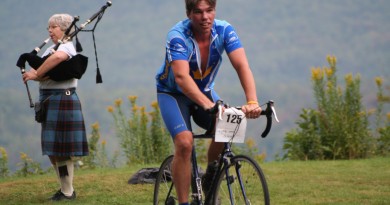Back Bothering When Riding a Bike? In Most Cases, It Shouldn’t.
Whether road, hybrid, triathlon or mountain bike, when I ask people if their back bothers them I often get the answer, “No. Well, it doesn’t hurt any more than what is normal for someone riding a bike.”
I have always found this interesting as it reveals how many people associate riding a bike with inherent discomfort; many people just expect that riding a bike requires pain. This is too bad as it is not what the reality should be.
Unless you have a chronic condition, most bike discomfort can be solved via a combination of proper bike fit and proper posture/riding technique. If your back (or many other body parts) does not bother you chronically in other activities, it likely should not bother you when riding a bike.
This is good news, but what are the solutions? Good question. I am going to save crucial postural and technique items for another article. Today, we will focus on the most common fit/set-up that contribute to a sore lower back and the basics of bike set-up that can help.
While there are few universal causes of discomfort in bike fit, some set-up items are more common contributors to back issues than others. Overextension, lack of adequate stabilization, and muscle overuse are the three most common causes of lower back issues on the bike.
From a bike set-up perspective, making sure that your leg extension is in the correct range is crucial to prevent muscle overextension and overuse. A saddle that is too low can encourage you to use a limited range of key pedaling muscle groups (often overusing the quadriceps), while making it difficult to access others (like the glutes or hamstrings). When your quadriceps are working hard on a bike, they require a lot of stabilization from the muscles that support the pelvis and back; if you depend almost exclusively on the quadriceps during pedaling, you likely are also not getting full muscle elongation and will thus be more prone to lower back discomfort.
This is why many riders have more acute back issues when they climb and are under high intensity. Correct seat height encourages the rider to gain full leg extension without hyperextension; ideal cycling leg extension is between 145-155 degrees between the hip-knee-ankle at maximum leg extension with a neutral heel angle.
A saddle that is too high, or a handlebar position that is too far out and/or low, can force the rider to overextend their hamstrings and rock in the hips. This overextension can increase the load and stability requirements on your lower back muscles and lead to soreness. This is similar to why an overly deep toe touch, or weeding the garden, can cause back pain; muscle overextension is not comfortable.
We discussed proper saddle height above, but your handlebar position should keep your body (especially your hips and hamstrings) within its range of motion while encouraging neutral posture and adequate support while pedaling. Keeping in mind that posture and technique vary greatly, ideal torso support usually occurs when the angle between the hip, shoulder and hand is between 90 and 95 degrees on a road bike, but often less on a mountain or hybrid bike.
It is important to remember that changes in bike position should encourage better posture, pedaling technique, and structural support. However, proper bike set-up cannot force these things to happen. If a technique or postural element remains off after changes, your back will likely still bother you. A proper bike fit is more than just setting a saddle and handlebars to some key angles. A good bike fitter will provide you not only with bike set-up recommendations, but also technique and postural information that helps you directly address these issues as well.

